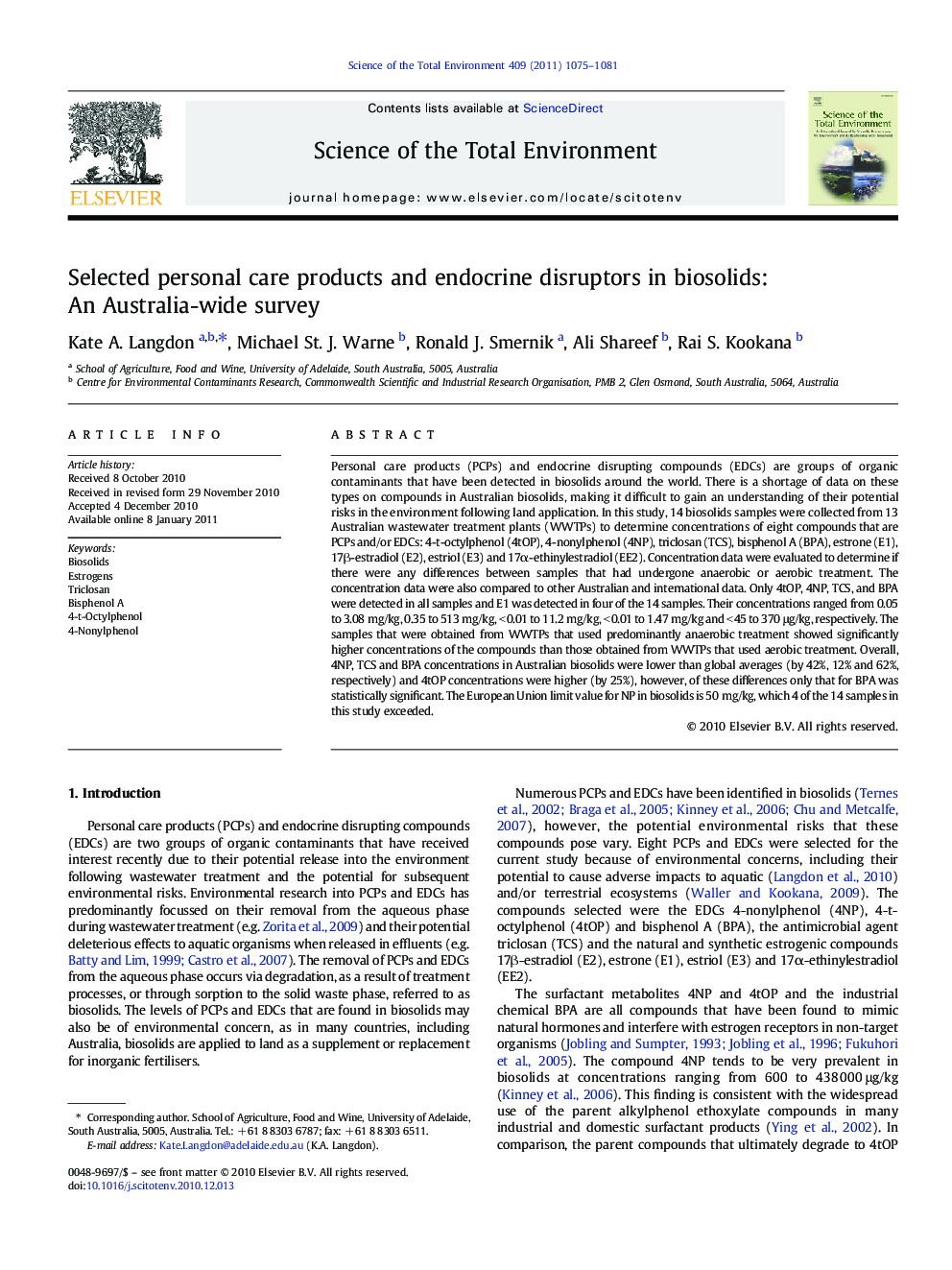| Article ID | Journal | Published Year | Pages | File Type |
|---|---|---|---|---|
| 4430326 | Science of The Total Environment | 2011 | 7 Pages |
Personal care products (PCPs) and endocrine disrupting compounds (EDCs) are groups of organic contaminants that have been detected in biosolids around the world. There is a shortage of data on these types on compounds in Australian biosolids, making it difficult to gain an understanding of their potential risks in the environment following land application. In this study, 14 biosolids samples were collected from 13 Australian wastewater treatment plants (WWTPs) to determine concentrations of eight compounds that are PCPs and/or EDCs: 4-t-octylphenol (4tOP), 4-nonylphenol (4NP), triclosan (TCS), bisphenol A (BPA), estrone (E1), 17β-estradiol (E2), estriol (E3) and 17α-ethinylestradiol (EE2). Concentration data were evaluated to determine if there were any differences between samples that had undergone anaerobic or aerobic treatment. The concentration data were also compared to other Australian and international data. Only 4tOP, 4NP, TCS, and BPA were detected in all samples and E1 was detected in four of the 14 samples. Their concentrations ranged from 0.05 to 3.08 mg/kg, 0.35 to 513 mg/kg, < 0.01 to 11.2 mg/kg, < 0.01 to 1.47 mg/kg and < 45 to 370 μg/kg, respectively. The samples that were obtained from WWTPs that used predominantly anaerobic treatment showed significantly higher concentrations of the compounds than those obtained from WWTPs that used aerobic treatment. Overall, 4NP, TCS and BPA concentrations in Australian biosolids were lower than global averages (by 42%, 12% and 62%, respectively) and 4tOP concentrations were higher (by 25%), however, of these differences only that for BPA was statistically significant. The European Union limit value for NP in biosolids is 50 mg/kg, which 4 of the 14 samples in this study exceeded.
Research Highlights► 4-t-Octylphenol, 4-nonylphenol, bisphenol A and triclosan were detected in all samples. ► Most estrogen compounds were below the limit of detection. ► Compound concentrations were lower in aerobic compared to anaerobic treated samples. ► The European Union limit value for nonylphenols was exceeded in 30% of the samples.
